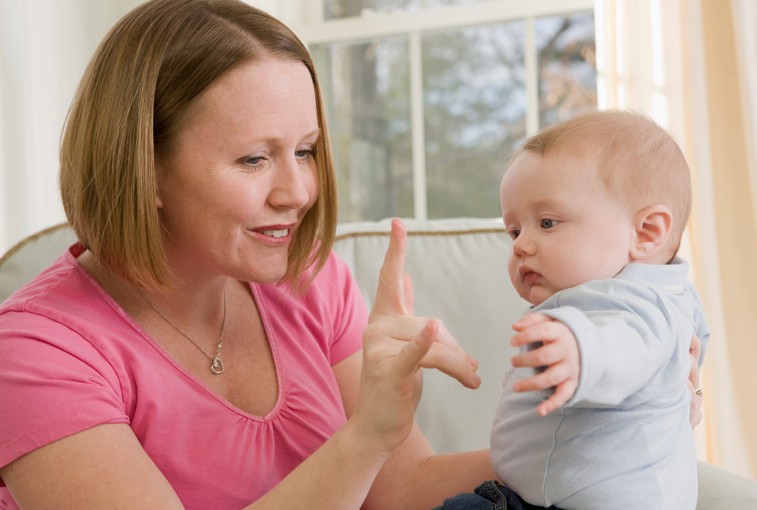Have you considered teaching your child sign language? Babies can use their hands to “talk” long before speech develops, but it might feel like an overwhelming task for you.
Here are some reasons why most pediatricians approve of babies communicating through sign language and ways to help you get started.
Bridge the communication gap
Sign language can help bridge the gap in development where babies want to tell you something, but can’t. Most babies don’t begin using meaningful language until around 18 to 24 months. While you can begin doing basic signs together in the early months, most babies don’t have the dexterity to sign until they are 8 to 9 months old.
Signing with your baby not only increases communication but can strengthen your bond as well. If is fun! You can sign songs, games and other interactive activities. Knowing some basic signs can be a useful tool for you, personally.
Getting started
Instead of learning to sign the letters of the alphabet, start with whole words – things that are in baby’s everyday world. According to “Heading Home With Your Newborn,” 2nd Edition (Copyright © 2010 American Academy of Pediatrics) the following are great starter words or phrases:
- airplane
- baby
- ball
- bird
- blanket
- book
- cat
- cup
- cold
- daddy
- diaper
- dog
- done
- drink
- eat
- go
- good night
- happy
- help
- hot
- hurt
- I love you
- milk
- mommy
- more
- nap
- no
- outside
- please
- sit
- sleep
- star
- thank you
- up
- water
Tips for success
- Additional Resources: There are many videos and books about baby sign language. Most daycare centers teach signing as a part of infant and toddler curriculum.
- Practices Makes Perfect: Don’t give up! Try and sign every day with your baby. Your baby may not be receptive right away and that’s OK. Use signs (and language) to describe daily things you do with baby (giving a bath or making dinner) or toys they play with often.
- Stay Verbal: Just because you and baby begin learning to sign, try and make sure you are still verbal with your baby. Expose baby to as much language as possible. Remember, most babies say their first words around 12 months.
- Increase Exposure: Try to include your spouse, grandparents, and other caregivers in the signing. The more your baby is exposed to sign language, the higher the chances of success. If a child care giver is the one teaching the signs, ensure you are in the loop so you know what your baby is asking when they sign to you.
- Set Realistic Expectations: And finally, set realistic expectations and stay positive.
Talk to your baby’s pediatrician to learn more about the benefits of sign language and how to get started.
…
Posted In Children's, Health Information, Women's
